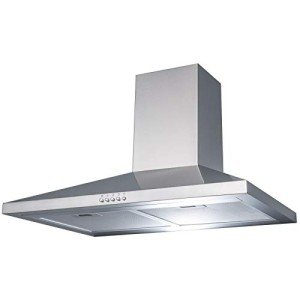
Kitchen Chimney Hood
Add a reviewOverview
-
Founded Date February 26, 1946
-
Sectors Management
-
Posted Jobs 0
-
Viewed 4
Company Description
Why Cooker Hoods Isn’t A Topic That People Are Interested In.
The Ultimate Guide to Kitchen Cooker Hoods
When it concerns creating an efficient, comfortable, and trendy kitchen, one component that frequently gets ignored is the cooker hood. An essential component in modern kitchens, cooker hoods play a crucial role in keeping air quality while enhancing the functionality of the cooking location. In this thorough guide, we will explore the significance of cooker hoods, their types, installation ideas, maintenance practices, and answers to frequently asked questions.
What is a Kitchen Cooker Hood?
A kitchen cooker hood, also understood as a range hood or exhaust hood, is a Kitchen Cooker Hoods, Https://Www.Randallzavodny.Top/, appliance developed to aerate smoke, heat, grease, and steam created during cooking. Cooker hoods can either recirculate air back into the kitchen or vent it outside, depending upon the design and installation.
Tables below will use a detailed comparison of the various kinds of cooker hoods, their features, and considerations when picking the best one for your kitchen.
Kinds Of Cooker Hoods
| Type | Description | Pros | Cons |
|---|---|---|---|
| Wall-Mounted | Installed on the wall above the stove and vented directly outdoors. | Efficient ventilation; saves area. | Setup may be complex; restricted placement. |
| Island | Suspended from the ceiling over a kitchen island. | Visual appeal; supplies excellent protection. | High installation expense; needs a ceiling hook. |
| Under-Cabinet | Installed beneath cabinets above a stove, ideal for restricted space. | Compact; practical for small kitchens. | Might not be as effective; air flow can be limited. |
| Downdraft | Constructed into the counter top, increases when required and withdraws when not in usage. | Smooth design; efficient for cooktops. | Normally less efficient; can be more expensive. |
| Portable | Lightweight, freestanding systems that can easily be moved as required. | Versatile; can be used in different areas. | Might not be as powerful; limited by size. |
Secret Features to Consider
- Extraction Method: Choose in between ducted (vented) and ductless (recirculating).
- Product: Stainless steel is long lasting and easy to tidy; glass provides a modern aesthetic.
- Size: Ensure the hood is at least as wide as your cooktop to optimize coverage.
- CFM Rating: The Cubic Feet per Minute (CFM) suggests the ventilation power; normally, 300-600 CFM is ideal for many home kitchens.
- Sound Level: Measured in sones; quieter hoods generally operate at lower sone levels.
- Filtering: Filters can be charcoal for ductless systems or metal for ducted systems; ease of cleaning is important.
Significance of Kitchen Cooker Hoods
Correct ventilation in a kitchen is essential for several factors:
- Improved Air Quality: Cooker hoods assist remove hazardous smoke, steam, and odors produced during cooking.
- Health Benefits: By eliminating air-borne grease and particulates, they decrease breathing risks and enhance general indoor air quality.
- Avoiding Damage: Excess moisture and heat from cooking can lead to mold and damage to kitchen surface areas. Cooker hoods help reduce these concerns.
- Boosted Comfort: An efficient hood can considerably decrease kitchen temperatures, making cooking more satisfying.
Setup Tips
Setting up a cooker hood is a vital action that requires careful consideration of several aspects:

- Location: Position the hood directly above the cooktop, preserving a height of 24-36 inches.
- Power Source: Ensure there is an accessible electrical outlet near the installation website for appropriate power supply.
- Ducting: Choose a straight and short duct course to take full advantage of effectiveness; avoid extreme bends.
- Expert Installation: For more complicated layouts, employing an expert installer can ensure proper functionality and security.
- Follow Manufacturer’s Guidelines: Always describe manufacturer directions for particular setup requirements and recommendations.
Upkeep Tips
To make the most of the longevity and performance of your cooker hood, routine upkeep is crucial. Here are a number of upkeep suggestions:
- Clean Regularly: Wipe down the outside with suitable cleaners to keep surface areas spotless.
- Change Filters: For ducted hoods, clean or replace metal filters every 3-6 months. For ductless hoods, ensure charcoal filters are replaced according to the producer’s regulations.
- Inspect Ductwork: Inspect vents and ductwork for clogs or buildup of grease.
- Sound Keeping: If the hood begins making unusual noises, it may suggest a problem with the motor or fan. Perform timely repairs.
- Professional Servicing: Consider an annual checkup by an expert to guarantee optimal efficiency.
Frequently Asked Questions (FAQs)
1. How do I choose the ideal size of cooker hood for my kitchen?
To identify the right size, determine the width of your cooktop and pick a hood that is at least the same width or larger.
2. Are ducted hoods much better than ductless?
Ducted hoods tend to be more effective at aerating air, while ductless hoods are flexible and easier to set up.
3. How often should I clean the filters?
Metal filters need to be cleaned up every few months, while charcoal filters need to be changed according to the producer’s recommendations.
4. What is the ideal CFM for my kitchen?
For a standard home kitchen, a CFM score between 300 to 600 is typically sufficient. However, larger upgrades might require greater CFMs.
5. Can I install a cooker hood myself?
While some models enable for DIY installation, it is often suggested to work with a professional for more complicated ducting and electrical work.
In conclusion, a kitchen cooker hood is more than simply a practical appliance; it is vital for maintaining a safe and healthy cooking environment. By comprehending the types, functions, installation, and maintenance of cooker hoods, homeowners can make educated decisions causing improved culinary experiences and kitchen looks. With the right cooker hood, a kitchen can transform into a space that combines style with performance, ensuring pleasant cooking and entertaining for several years to come.
